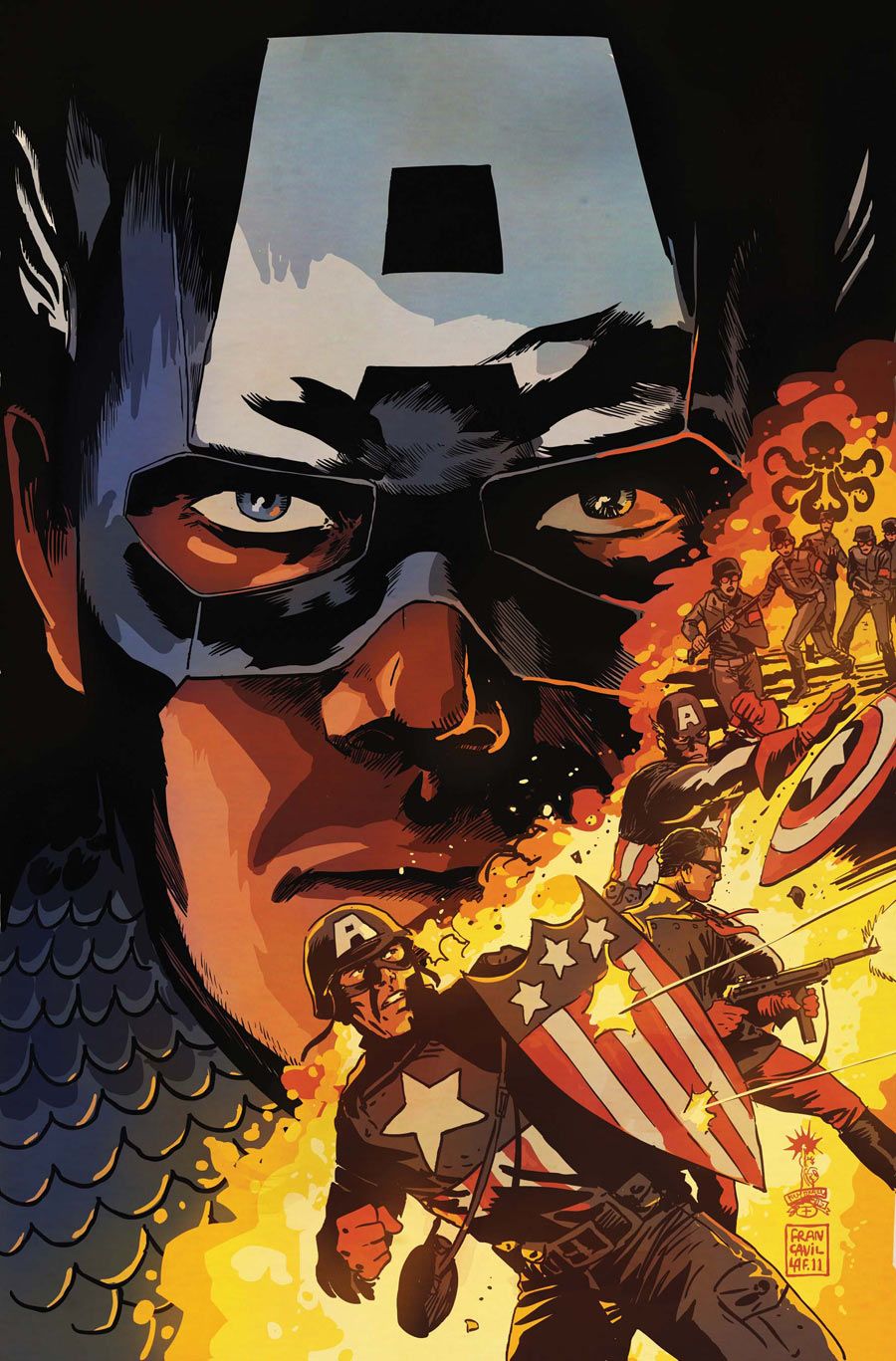2011 is almost over and, to celebrate, Marvel Comics has lined up its shipping schedule to provide a triple dose of Captain America comics this week. It's both an ending and a beginning for the two issues of "Captain America" released, and "Captain America & Bucky" shifts dramatically from its opening storyarc with a new co-plotter/scripter and artist in James Asmus and Francesco Francavilla, respectively. More than that, the title puts the focus on a different Captain America and Bucky than readers expect: the men who replaced the originals after their 'deaths' in 1945.
So many stories have been mined from the experiences of Steve Rogers and Bucky Barnes in World War II that, immediately, the concept of exploring Bill Naslund and Fred Davis, Jr., their replacements, is fresh and exciting. The idea of replacements for Rogers and Barnes was created to explain the comics featuring Captain America and Bucky released after World War II when it was retconned later that they died at the hands of Baron Zemo. Despite the fertile ground of those two characters, they've mostly been overlooked in recent years and focusing on them provides an answer to the question of how "Captain America & Bucky" can move forward with so much known about the originals already.
Told through the eyes of Davis in the present day, Asmus explores how the pair were recruited to be the new Captain America and Bucky and juxtaposes that with an attempt on Davis's life now that forces Steve Rogers to investigate with the help of Naslund's grandson. The mixture of the past and present keeps the issue moving and adds excitement. While the adventures of the replacement Cap and Bucky would be entertaining, there's also a disconnect from what's happening now that lessens the impact. More than that, Davis' recollections as an old man on his past provide more perspective, especially when he realizes that he didn't know his partner nearly as well as he thought he did.
Following Chris Samnee on this title would be a tall order for most artists and Marvel solved that problem smartly: Francesco Francavilla. Doing both the line and color art, Francavilla draws truly gorgeous comics that don't focus on realism, preferring to communicate through direct action and the emotional tone of scenes. His line work relies heavily on shadow, giving off the impression of simple, uncomplicated figures, hiding the subtlety and range of his art. So much of the issue is told through glances and reactions, and Francavilla never misses a step. The way he uses colors enhances every scene, not worrying about realism, but what will communicate what's happening both literally and emotionally.
2012 brings a new "Winter Soldier" series, leaving questions about "Captain America & Bucky" and the purpose it could serve. Originally, it seemed to provide a series for James Barnes now that Steve Rogers is Captain America and, with his return in "Winter Soldier," that left this title looking like the odd one out. If this issue is any indication, "Captain America & Bucky" could just be the best Captain America comic available, exploring new territory both in the past and present with one of the best artists in comics on board. In a week of three Captain America comics, this is the one that's a 'must buy.'

